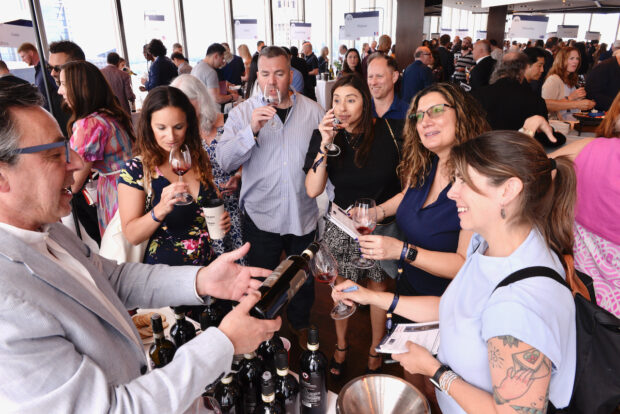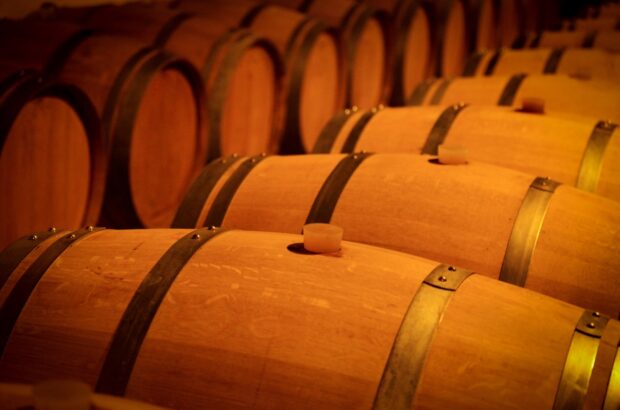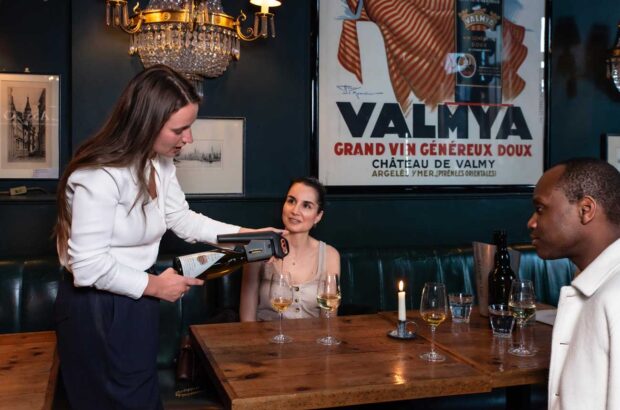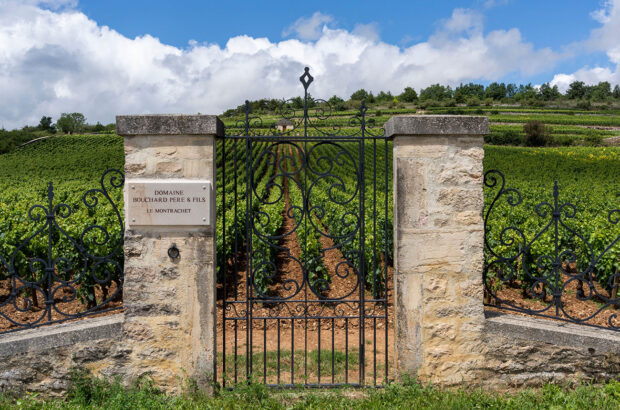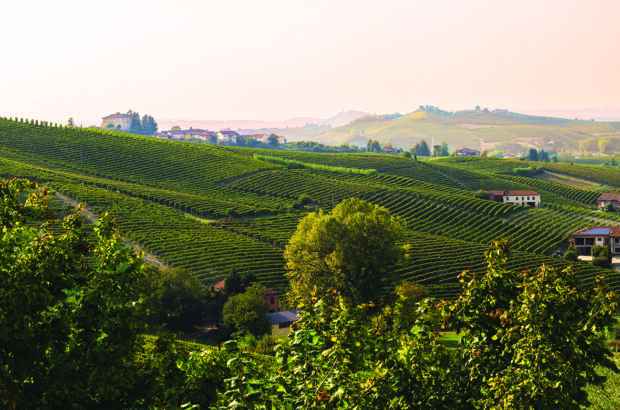There is no official classification of Chianti Classico sub-zones and neither is there likely to be one in the near future. The Producers’ Consortium, the only body in a position to promote such a thing, is decidedly reluctant to risk rekindling the ancient rivalries of the area by venturing into this complex and potentially divisive area. In its defence, it has to be said that the ‘cru’ concept is not particularly strong in the local traditions in Tuscany – unlike in Piemonte where, for example, different styles of Barolo are associated with the various villages of the DOCG area and single vineyard denominations count for a lot. All the same, in Chianti a number of areas (or top-drawer producers) could stake a claim to ‘cru’ status, among them sub-zones like Lamole, Lecchi and Monti.
Chianti Classico great Lapo Mazzei dies
The most meaningful and widely recognised example of a potential village appellation Chianti, however, is Panzano. This may be a small and rather ordinary-looking village in the Commune of Greve but, consultant winemaker Stefano Chioccioli says: ‘If we had the courage to draw up a French-style classification of the sub-zones of Chianti Classico, Panzano would be first in line for the grand cru category.’
How the land lies
The village is situated just off the Via Chiantigiana, which runs north to south through the heart of the DOCG zone, and is perched at one end of a ridge which divides the valley of the Pesa in the west from that of the Greve in the east. The majority of the vineyards are planted at an altitude of 350 to 450 metres, which is just about ideal for Sangiovese. The soils have a high proportion of flaky shale, galestro, and a certain amount of limestone albarese, the two types of terrain most congenial to Chianti’s leading native variety. Below the ridge on the Pesa side, the hills open into a number of broad natural amphitheatres – a rare feature in Chianti, where the valleys are typically steep and narrow. The biggest of these, located directly below the village, where Fontodi is the biggest owner, is traditionally the Conca d’Oro (or Golden Shell), which offers superb sites for the sun-loving Sangiovese. Panzano’s other blue riband estates, Castello di Rampolla, La Massa and Villa Cafaggio, line up along the same side of the ridge and share very similar conditions with smaller top-class properties such as Carobbio, Reggine, Vignole and Monte Bernardi.
Getting cooler
The Greve side of the hill is cooler and is generally considered to be to premier cru what the Conca d’Oro is to grand cru. However, what the wines may lack in body they make up for in fruit, and in very hot vintages being on the cool side of the hill may even be an advantage. Top estates on the Greve side of the village include Casaloste, Le Cinciole, Le Fonti, La arcellina and Panzanello.
Two other very good producers, Vecchie Terre di Montefili and Cennatoio, are located off the ridge altogether. Cennatoio, for example, is above the village on the other side of the Via Chiantigiana and has very different growing conditions, but both are traditionally considered Panzano estates. Panzano is a rare example in Chianti of an extensive, top quality viticultural area with largely homogeneous growing conditions. But what are the distinguishing features of the wines? Here it starts to get a little trickier. Producers agree about the structure of Panzano Chiantis, their longevity and also a tendency towards what Stefano Farkas of Cafaggio sees as a certain austerity typical of Sangiovese – Fontodi’s IGT Flaccianello, a Panzano classic, is proverbial for its initial toughness. None of the excellent 1997 riservas from the top estates are ready for drinking yet and many of 1995s could do also with a couple more years.
As for aroma, Giovanni Manetti suggests ‘complexity and a certain tangy, mineral character’ as a common denominator, but this one is hard to pick out. Giovanni d’Orsi from Casaloste offers ‘berry fruit’ and veteran Giovanni Cappelli ‘flowers and spice’.
Perhaps the most revealing observation is made by Stefano Chioccioli, who says that, from a technical point of view, the musts he works with in Panzano stand out for extract and, in particular, very high concentration of anthocyanins. In other words, they provide the raw material to make the big, rich, deeply coloured, barrique-conditioned Chianti which, since the mid-1990s, has rapidly become the premium style in the DOCG. It is no coincidence that this period coincides exactly with the arrival of a wave of new owners in the village and the establishment of Panzano’s reputation not only as a great growing area, but also as thehome of state-of-the-art winemaking. Among those who really shook things up are the young Neapolitan Giampaolo Motta and his winemaker Carlo Ferrini at La Massa, who were the first in the village to make the soft, round, fruit-driven style of Sangiovese inspired by modern Bordeaux that has set new standards in Chianti Classico.
Which brings us back to winemakers. Besides Ferrini and Chioccioli, who has brought the same kind of round depth of fruit to the wines of Villa Cafaggio since his arrival in 1998, the village benefits from the talents of Franco Bernabei, Giovanni Cappelli, Vittorio Fiore, Giorgio Marone and Gabriella Tani. And nobody could argue that they represent no less of a resource than the galestro soil. So what price terroir? The serious answer, of course, is that the winemaker and the terroir are both indispensable elements in the winemaking equation. More top-class Chianti comes out of Panzano than any other identifiable sub-zone of the DOCG, and this cannot purely be the result of massive investment, quality-orientated vineyard management and cutting edge oenology. It is these factors, however, which give Panzano a quality edge.
Non-Riserva Chianti
Many 1998 Conca d’Oro wines have lots of body but narrow aromas and are a touch leathery. Recommended wines: Carobbio, Casaloste, Fontodi, La Massa, La Massa Giorgio Primo, La Marcellina Comignole, Panzanello, Villa Cafaggio, Vescovino Vigna Piccola
Chianti Classico Riserva
The 1997 riservas are well worth laying down, including Reggine Riserva, made from pre-war vines. Recommended wines: Carobbio, Casaloste Don Vincenzo, Castello di Rampolla, Fontodi Vigna del Sorbo, Le Cinciole Petresco, Reggine.
IGTs Panzano has two of Tuscany’s great Cabernet Sauvignons, Castello di Rampolla’s Vigna d’Alceo and Villa Cafaggio’s Cortaccio, and a surprising Cabernet-Merlot in Monte Bernardi’s Tzingana. Among the Sangiovese-Cabernet blends, the top wines are Castello di Rampolla’s Sammarco, Le Fonti’s Fontissimo and Vecchie Terre di Montefili’s Bruno di Rocca.



